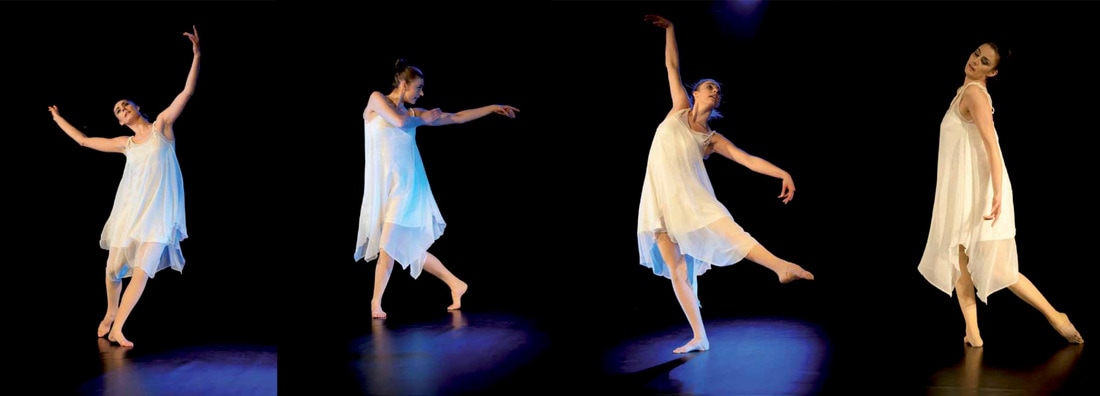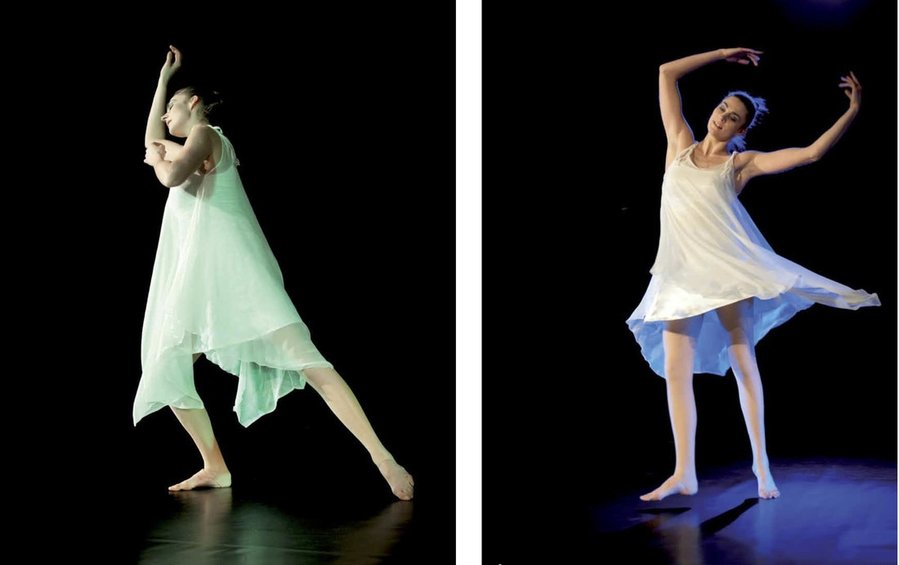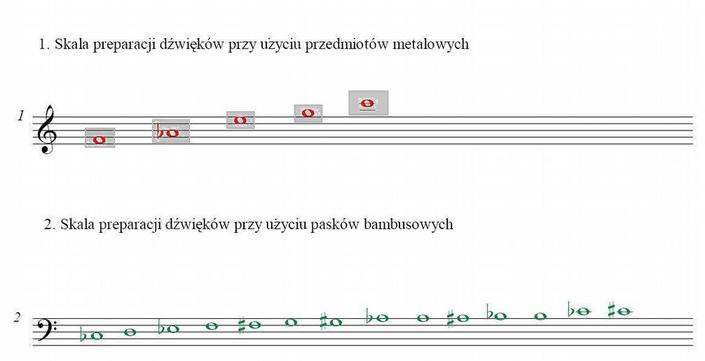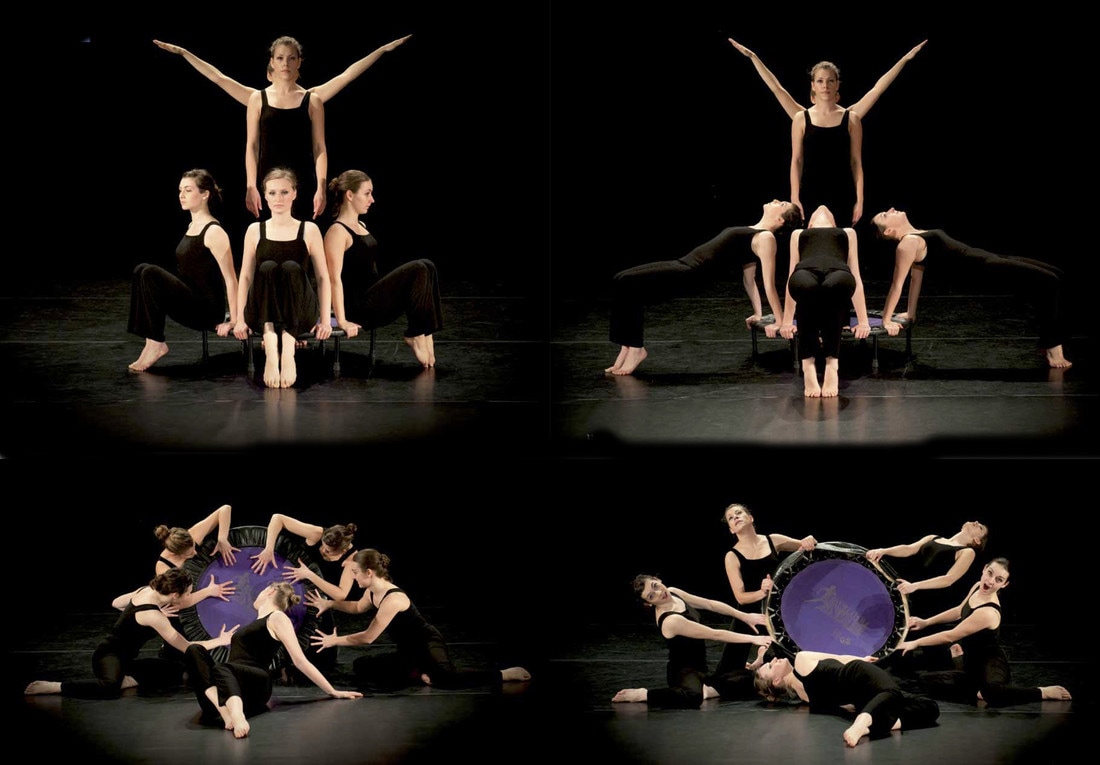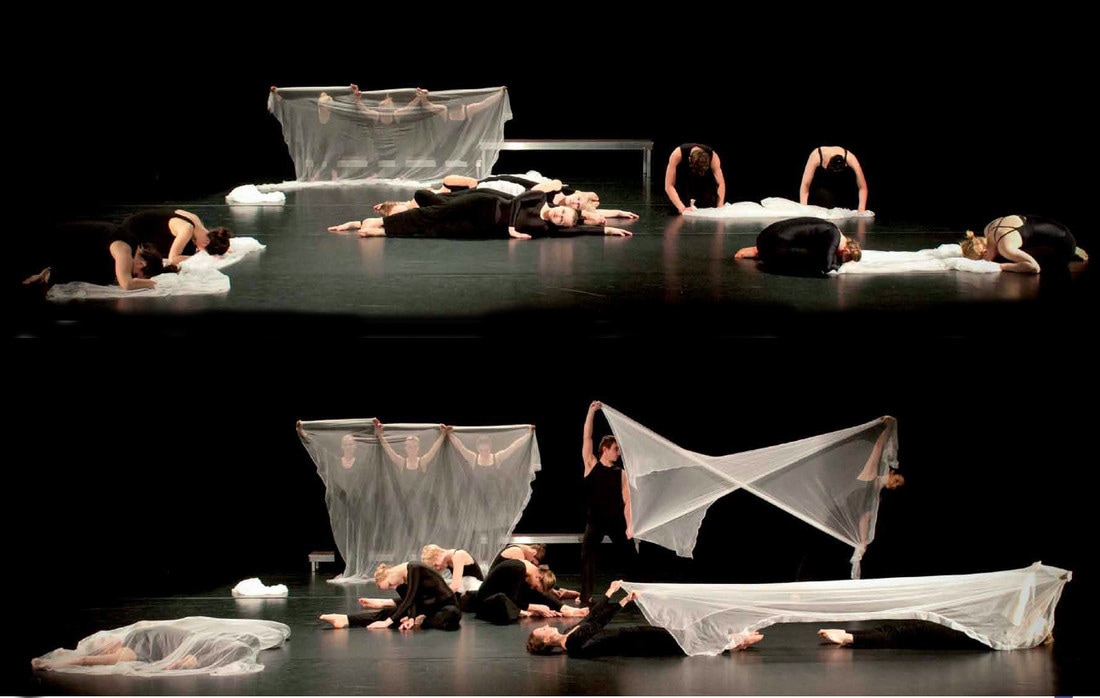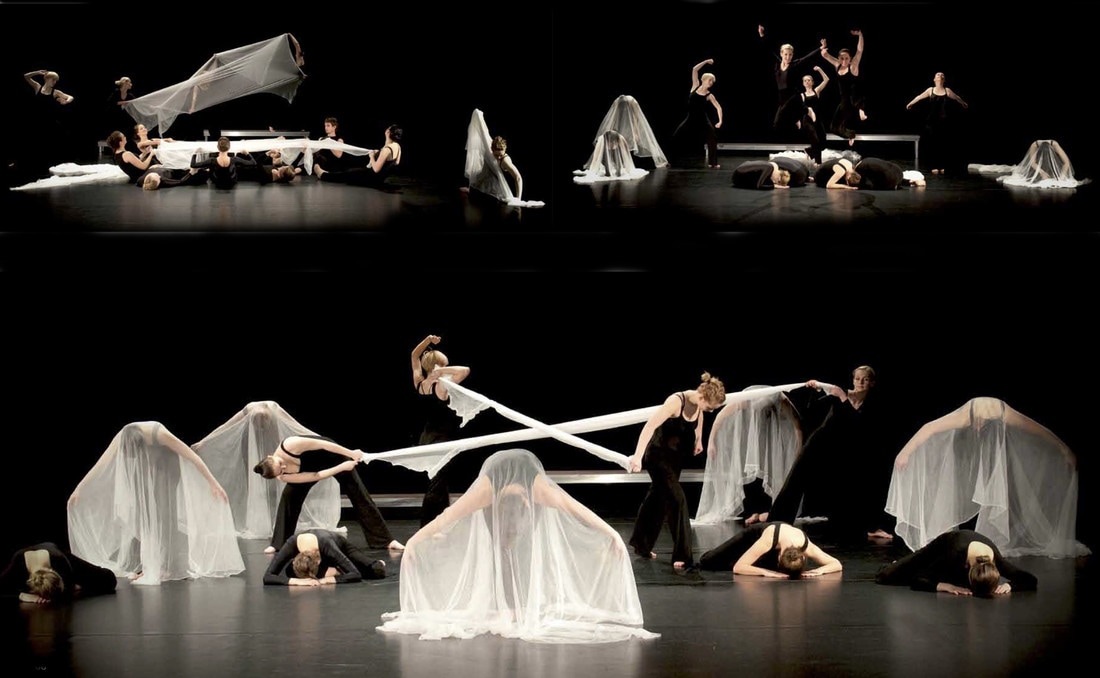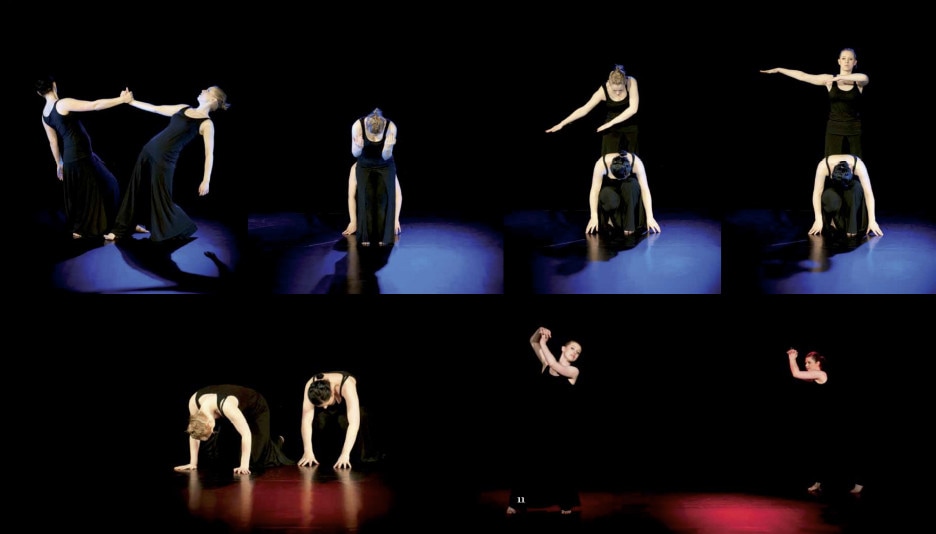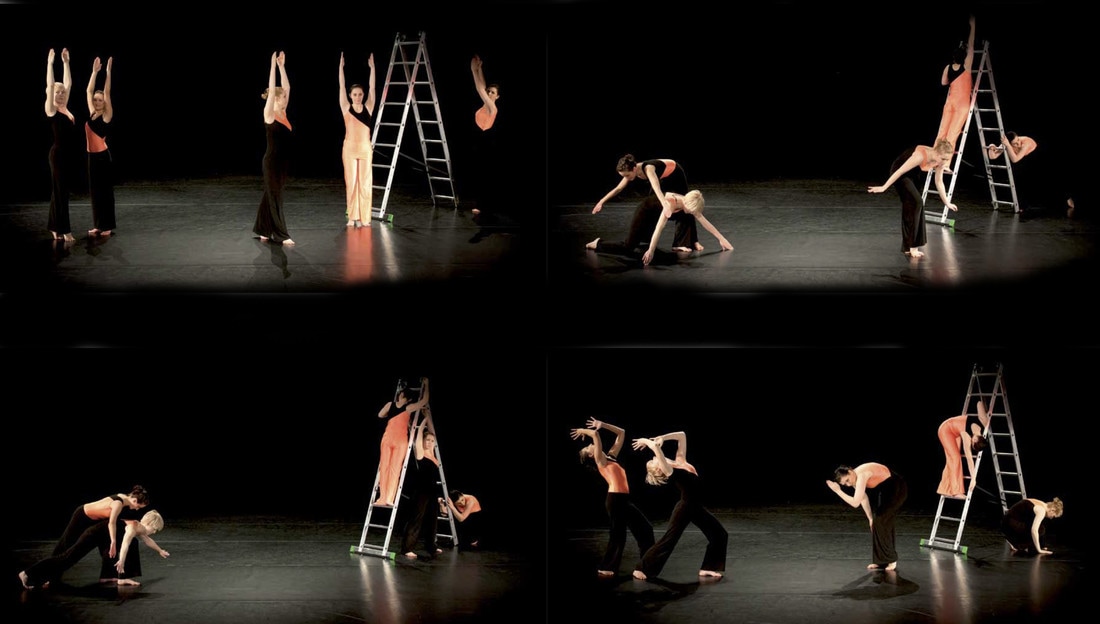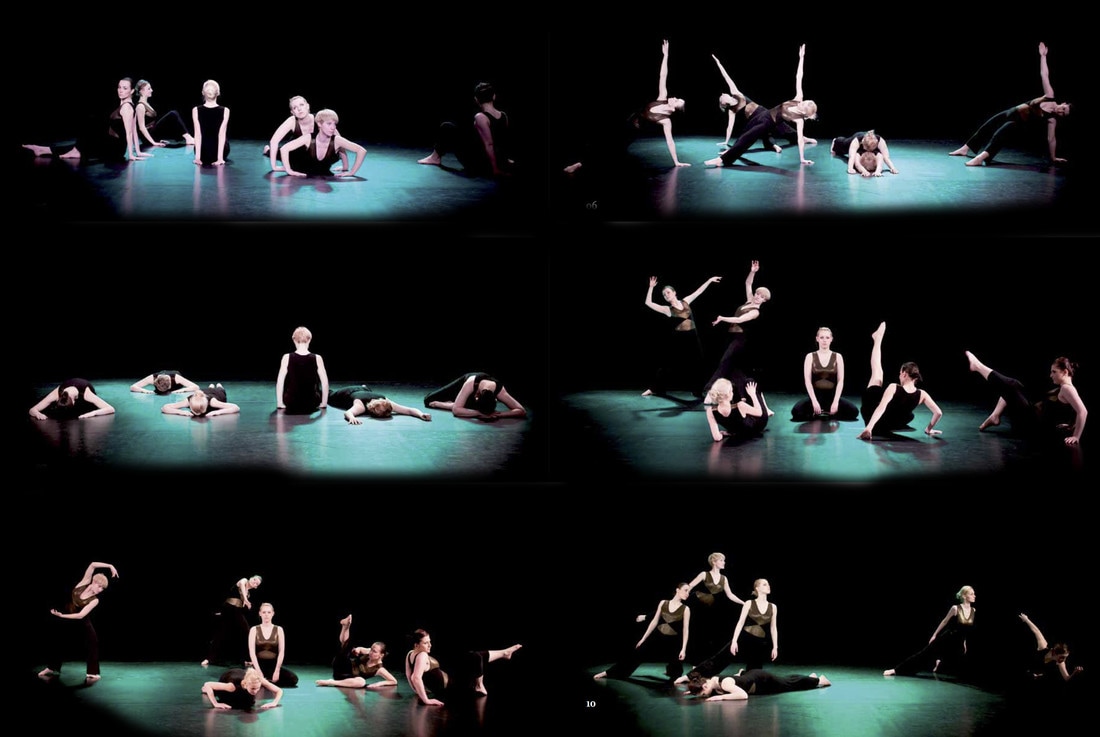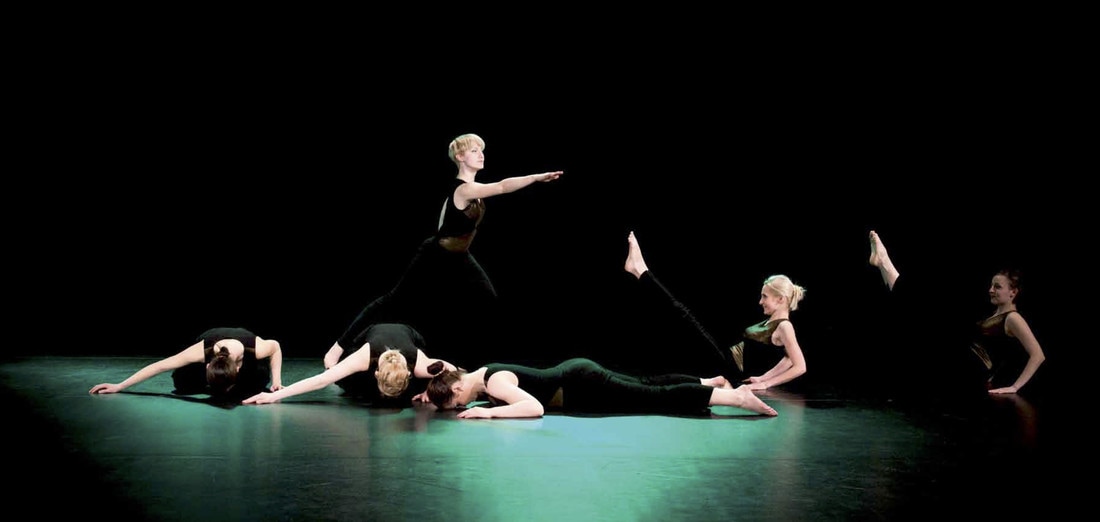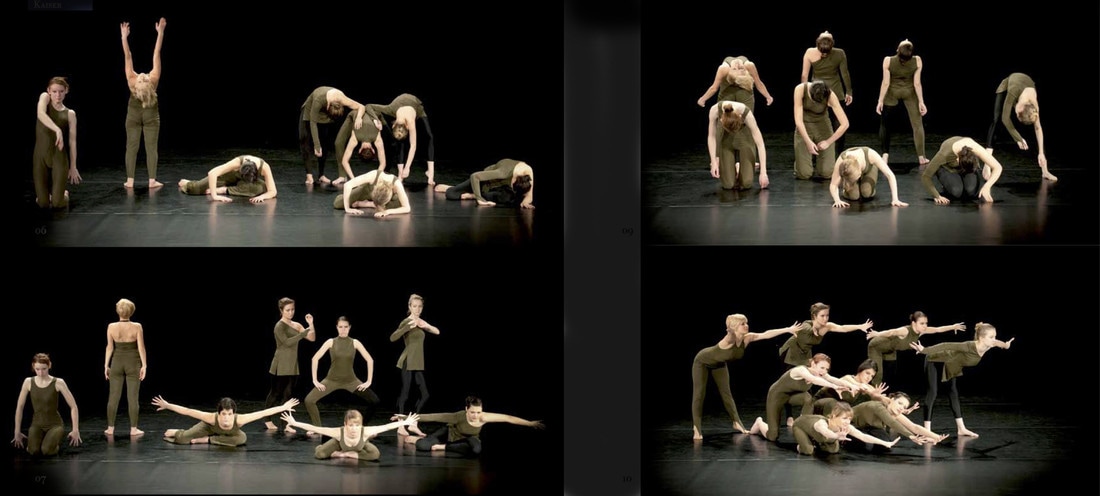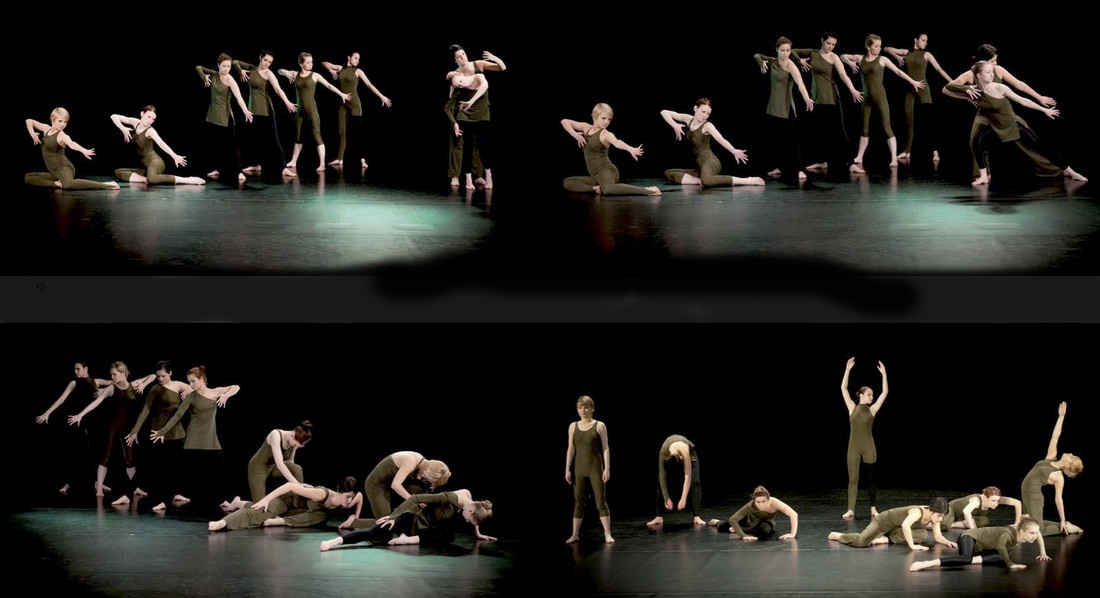UDC: 781.22:793.327
781.01
COBISS.SR-ID 229890316
Received:October 22,2016/
Reviewed:January 20,2017/
Accepted:January 22,2017
The Sound in Movement
Interpretation of the Selected Music Pieces
by Debussy, Cage, Penderecki, Szalonek, Dobrowolski, Olczak, and Kaiser
|
Citation:
Galikowska-Gajewska, Anna. 2017. “The Sound in Movement Interpretation of the Selected Music Pieces by Debussy, Cage, Penderecki, Szalonek, Dobrowolski, Olczak, and Kaiser.” Accelerando: Belgrade Journal of Music and Dance 2:9. |
Abstract
This article contains a description of an author's artistic research/project consisting in the development of movement interpretations of compositions by C. Debussy, J. Cage, K. Penderecki, W. Szalonek, A. Dobrowolski, K. Olczak, and T. Kaiser, in which the musical tone and colour are depicted with the means of movement arranged in space. The recording of the project performance was made at the Concert Hall of the Stanisław Moniuszko Academy of Music in Gdańsk. The performers were the students in the special area of Eurhythmics at the faculty of Choral Conducting, Musical Education and Eurhythmics, the Stanisław Moniuszko Academy of Music in Gdańsk. This research was undertook for the purpose of doctoral theses and had as its background the author's many years of professional experience in creating musical choreography and her exploration of tone. Selected musical works were interpreted and expressed by movement of the human body. In addition, movement interpretations become here an instrument to comment on sound events, amplifying the recipient’s impressions of sound, which constitute a part of the Dalcroze method of musical education. Accordingly, the implication of the research is that it does not only introduce the issue of Eurhythmics but also prepares the recipient for new, seemingly broader perception of the musical work. Tone still remains for the author an extremely inspirational issue open for further exploration.
Keywords: movement interpretation, Eurhythmics, Dalcroze method, musical education, musical choreography. |
introduction
|
This website is under Attribution-NonCommercial-NoDerivatives 4.0 International (CC BY-NC-ND 4.0)
Belgrade Center for Music and Dance is the publisher of Accelerando: BJMD
Belgrade Center for Music and Dance is the publisher of Accelerando: BJMD


